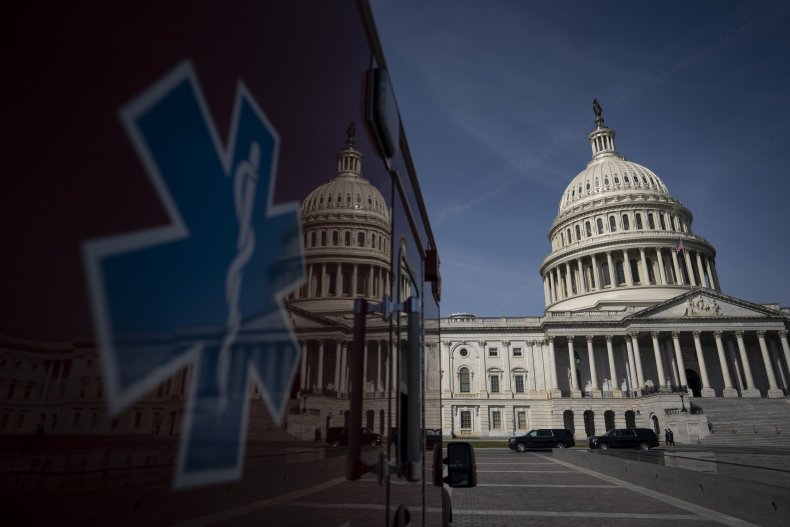COVID and Delta Variant Death Rates—What We Know so Far
The "overwhelming majority" of current COVID deaths in the U.S. are due to the Delta variant, an expert has said—but exact figures are difficult to calculate.
Centers for Disease Control and Prevention (CDC) figures suggest that the Delta variant and its subtypes accounted for more than 90 percent of new U.S. COVID cases surveyed in the two weeks to July 31.
Daily trends in the number of COVID deaths show the death rate per 100,000 people in the U.S. is currently around 185 since the very start of the pandemic, the CDC said as of August 10, and about 0.92 per 100,000 over the previous seven days.
But this is not Delta-specific.
While studies have suggested the Delta variant might cause more severe disease than other variants of COVID, it's hard to specify mortality figures, scientists have told Newsweek.
What DO We Know?
As stated, data shows that the Delta variant appears to be the predominant COVID variant in the U.S. at the moment as it spreads around the country, and is nearly twice as contagious as previous variants, according to the CDC.
Dr Francesca L. Beaudoin, Interim Chair of Epidemiology at Brown University, told Newsweek: "Since the latest projections suggest that more than 94 percent of current COVID-19 cases are due to Delta variants, and Delta also appears to make people sicker, we can be fairly confident that the overwhelming majority of deaths we are [currently] seeing are due to Delta."
Some studies have suggested that the variant is also linked to more severe disease than other variants, Dr Stephen Kimmel, Chair of the Department of Epidemiology at the University of Florida, told Newsweek.
One study conducted in Scotland and published in The Lancet journal in June suggested risk of hospital admission with Delta was roughly doubled when compared with the Alpha variant.
Overall, the U.S. COVID death rate is around 185 per 100,000 people, but taking missing infections into account means the statistic "is likely even more staggering," said Beaudoin. "U.S. life expectancy fell by 1.5 years in 2020, the single greatest decrease since World War II," she added.
Why Is It Hard To Calculate the Delta Death Rate?
For one thing, the U.S. is "falling short of surveillance" and we don't know how many people are infected with the variant at any point in time, according to Steffanie Strathdee, Associate Dean of Global Health Sciences at the University of California San Diego Department of Medicine.
She said: "If we only test people who are sick, those who have mild symptoms or who are asymptomatic don't end up in the denominator."
Vaccination is another factor, and it makes calculating death rates even more difficult since vaccines have been shown to prevent severe disease.
"Complicating matters is that we need to account for vaccination," Strathdee said. "It's clear that fully vaccinated people are less likely to have symptoms and less likely to die from COVID. So we need to calculate the death rates for unvaccinated versus vaccinated people separately."
How Are COVID Fatality Rates Calculated?
Mortality statistics can be reported in a number of ways. Many people will be familiar with the COVID death rate as expressed per 100,000 people.
Beaudoin states this "lets us compare apples to apples when talking about different geographic areas".
Scientists can also think about how likely someone is to die if they get an infection, known as the case fatality rate or infection fatality rate, said Kimmel. There is also the death rate in the entire population, including those not infected, which is better assessed over time.
"I really think we should be thinking about individual case fatality rates more as we try to increase vaccination rates," Kimmel added. "Fatality rates will also differ based on a person's underlying risk factors. They will be much higher in the elderly and those with underlying risk factors and lower in young healthy individuals."
Not every COVID sample is tested, meaning that we won't know the exact number of deaths from each variant.
"However, we can get very good estimates by a proportion of COVID-19 tests for variants of the SARS-CoV-2 virus and this can help us monitor trends over time," Beaudoin said.


